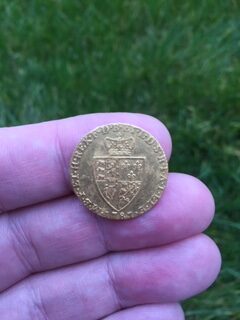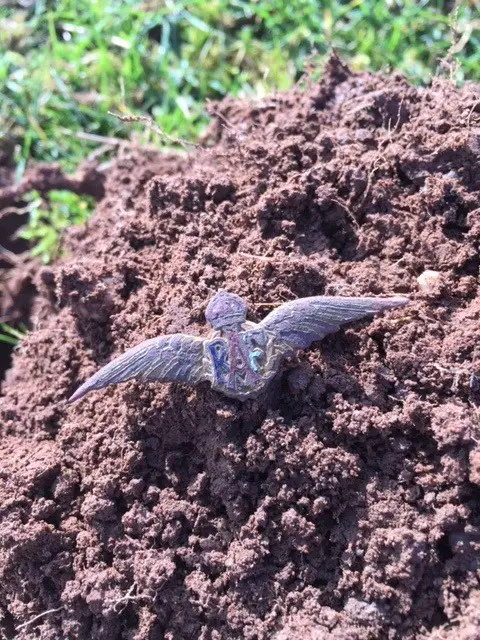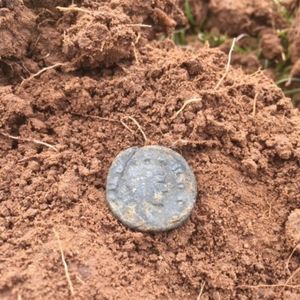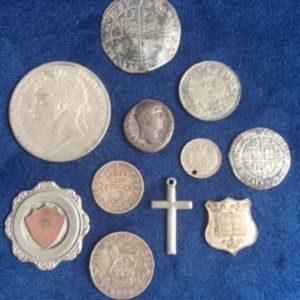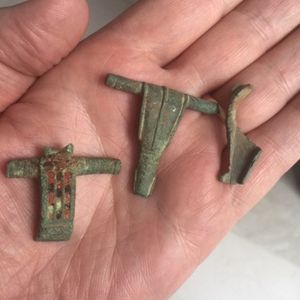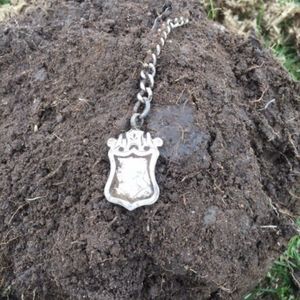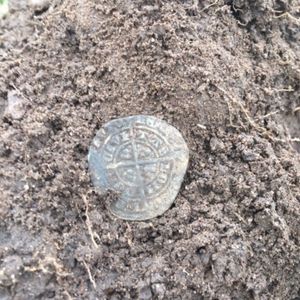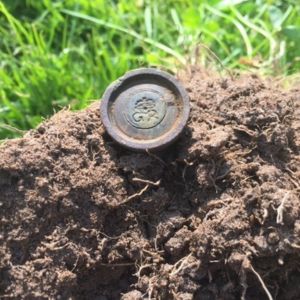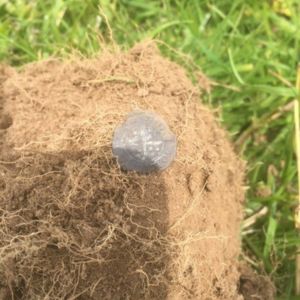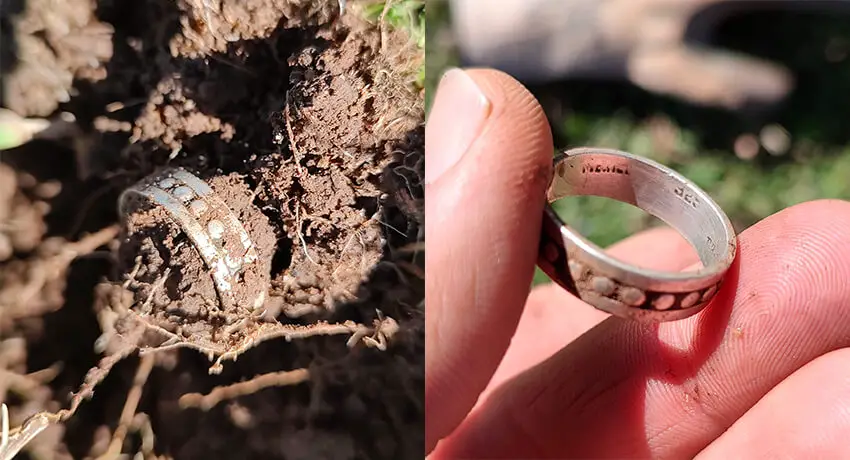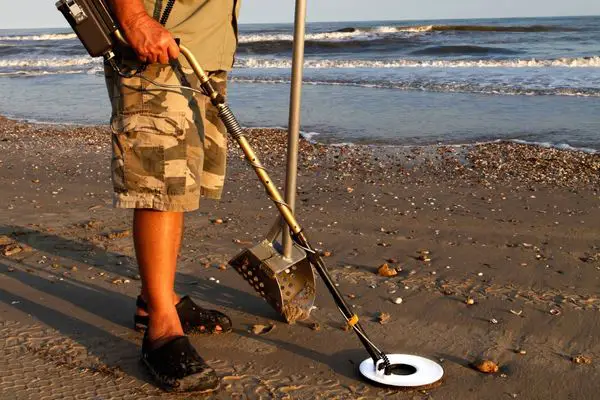What are hammered coins?
Hammered coins were the main coinage type throughout the medieval times in British history. They started to be introduced around 959 by King Aedgar and were struck until around 1663 in the reign of Charles II.
Mostly being made from thin silver blank discs, their details were struck into the coin by a carved metal die and a hammer, typically on an anvil. Hence the name “hammered” coinage.
High value hammered coins were also made from gold.
Hammered coins UK
Hammered coinage in Britain started around 959 with King Aedgar when he acclaimed the title of “King of All”.
King Aedgar wanted to really take charge of nation’s finances and made himself solely responsible when it came to issuing coins. He started mints all over Britain where he standardised the manufacture of silver pennies.
You can further read my article on the Saxons and Vikings along with their coinage here.

These silver pennies had his portrait on one side and on the other side, the name of the mint master and the location of the mint.
The role of the mint master was very important and they were elevated to a high place in society. It also came with immense responsibility.
It was very commonplace in medieval markets all over Britain to see coin scales or a little pair of snips to confirm coins were genuine.
In fact, coin weights are a common detectorist find. Because the coins were standardised, they should all weigh they same to which the scales confirmed.
Very often, coins were snipped on their edges to confirm that they were made of solid silver throughout. This is why metal detectorists very often find these coins not as perfect circles but as coins with “clipped” edges.
This tells us that through its medieval life, it has been checked for authenticity. If a coin failed to meet the criteria of a genuine coin, the consequences could be very severe for the mint master as a coin’s authenticity was basically guaranteed by the crown.
As the mint masters name and location was on the coin, everyone would know where to find him! Mint marks can be really small and difficult to recognise without help.
Many detectorists use a digital microscope to really zoom in on the mint marks. I have a dedicated article on digital microscopes for coins here.
It has been recorded that in 1124 during the reign of King Henry 1st, a mint master who had minted debased silver coins with a lower silver content had his right hand removed from his arm along with his testicles!
Read my further article on recognising a Monarchs head on a coin here.
Coins from this period can fall into the definition of treasure. You can further read my article on the treasure process and Treasure definition here.
Hammered coinage mint marks
Mint marks on medieval hammered coinage were introduced later which was a way to guarantee the quality of the silver and instil confidence in the general population so that any coin they held which was unclipped was genuine.

These mint marks are really interesting and can consist of crosses, crowns, letters and numerals, celestial bodies, plants and flowers, animals and humans through to odd things like anchors and barrels.
These mint marks help to identify hammered coins which can be a minefield. They can identify the monarch, the mint master, an approximate date, where it was struck etc.
The identification of hammered coinage can also be hindered by clipping, which can remove any identifying marks around a coin’s edge.
General wear and tear during the coin’s circulation can render a coin smooth over time which also happens the copper coinage.
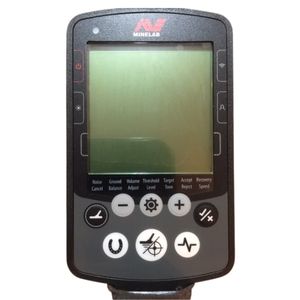
The Minelab Equinox 800
The ultimate and original multi frequency machine that has opened up a whole new world in detecting technology.
Deep detection and constant stable target identification.
When did hammered coins stop?
When Charles 1st became king, he believed that he had been appointed by God and that parliament should not interfere with his reign.
To make matters worse, he married a Catholic woman called Henriette of France and made her queen.
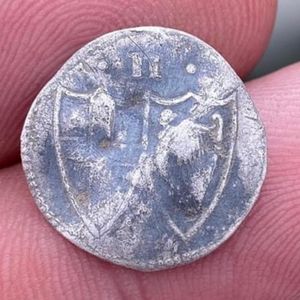
At the time, England had no enemies and no invasions were expected so the general population were looking to parliament to increase civil liberties and rights for the masses which Charles 1st didn’t want.
He later ran out of money and tried to raise taxes which didn’t go down well. The Civil War famously ensued in 1640 where parliamentarians fought royalists of Charles 1st and won.
Charles 1st was later tried and executed resulting in a period where hammered coinage was struck with no monarch’s head.
(These were known as Commonwealth coins and depict a George shield and an Irish shield) In 1660, parliament sent for Charles 2nd who was exiled in France at the time to return and become monarch.
He introduced a new method of minting coins which had a milled edge as we have today. This effectively was the final nail for hammered coinage which ended around 1663.
Why were hammered coins cut?
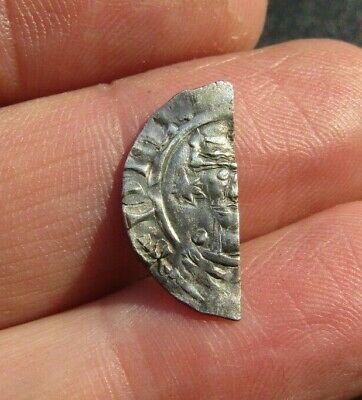
During the reign of Henry 2nd around 1180, he started to resolve the problem he inherited of poor quality coinage by reducing their numbers and appointing mint masters.
It was around this time that the newly designed coins had what is known as a small or short voided cross in the centre surrounded by pellets.
It was this clever design that allowed people to accurately cut full silver pennies into half pennies (cut halves) and then again into quarter pennies (cut quarters).
Interestingly, the term “farthing” originates from this as silver pennies were often cut into “forthlings” which later morphed into “farthings”.
In medieval times, the original silver hammered coins were only minted as pennies. At the time, many things could be purchased in a marketplace for less than a penny.
This is how silver pennies began to get cut into halves to create half pennies and then cut again to create quarters or “farthings”.
Hammered coins minted as farthings, halfpennies, pennies and groats would make an appearance around 1279 in the reign of Edward 1st who was the son of Henry 3rd.
Coin sizes for reference here are approximately thus….a Groat (equivalent of 4 pennies) are 26-29mm in diameter, a Penny will be 19-22mm, a half penny will be 14-16mm and a Farthing will be 10-12mm.
Best frequency for hammered coins

Hammered coins by their nature of being very small and very thin are incredibly notorious of being difficult to find with a metal detector.
Smaller, thinner sectioned targets react best to higher frequencies and detectors that utilise these fair better with these types of targets.
You can further read more in my article on metal detector discrimination and conductivity here.
Best metal detector settings for hammered coins
Medieval hammered coins unfortunately, or fortunately if you are in the UK or Europe don’t exist in the US. This is why many discrimination patterns for US hunting are quite aggressive with regards to rejecting junk targets.
The frustrating thing is for detectorists in the UK is that hammered silver cut quarters, cut halves and pennies will fall into the exact place on your conductivity scale as foil.
In the US, rejecting foil is always the norm however in the UK, if you reject anything above iron, you do so at your own risk and may miss these elusive targets.
I have more information about metal detector settings in my article on metal detector settings here.
Best metal detector for hammered coins
So, it’s common knowledge within the detecting community that higher frequency metal detectors are the best for finding hammered coins.
There is the drawback however that higher frequencies don’t penetrate the soil as deep as lower frequencies do. This can mean that depth is compromised with higher, single frequency detectors.
In an ideal world, wouldn’t it be great to have a metal detector that could use a spread of frequencies from low to high to ensure the chances of you missing a target was much reduced…..well you can!
Technology has come on leaps and bounds with multi frequency technology which has effectively made single frequency machines obsolete.
Minelab pioneered true multi frequency technology and you can get this for under £250 now with the Vanquish 340. You can read my article on multi frequency technology metal detector technology here.

Unbeatable Multi Frequency!
You can now get the ultimate power of multi frequency technology over single frequency detectors with the Minelab Vanquish range of detectors.
The entry level Vanquish 340 now gives you ultimate depth, stability and sensitivity on all target types in every soil, including wet beach sand.
Best way to clean hammered coins
Hammered coins can suffer from two main types of corrosion. The least destructive is when they are dug up and look blackened instead of silver coloured. This is due to something silver sulphide.
It’s a good thing to remember here that it’s not a great idea to over clean or polish hammered coins. Collectors do like to see them with a good to slight tarnish on them.
The second type of corrosion and the more destructive is where a debased silver coin will have some of its base metal corrode internally and blister out.
I have written an article on the best ways and how to clean old coins here.
Final thoughts
Hammered coins are considered the Holy Grail for metal detectorists. This is mainly due to them being so difficult to detect because of their size and thin nature.
Metal detectorists always secretly, (an not so secretly!) scream “YES!!!” when they find hammered coins. You’ll want to show them so why not read my article on metal detecting finds cases.
We’ve touched on when they came into being and when they were phased out. We also discussed why they were cut into smaller pieces to create half pennies and quarter pennies.
We finally talked about the best metal detector frequency to find them and I gave you a further reading suggestion on how to clean hammered coins.
Multi frequency detection gives you the best chance to find these elusive coins. Check out my article on coin collecting here.
These machines can get quite expensive but as I mentioned earlier, Minelab have offered this amazing technology in the entry level Vanquish 340 for less than £250.
The Vanquish range also offers the 440 and 540 which progressively give you more functions. I hope you enjoyed this article and that it’s been interesting for you.
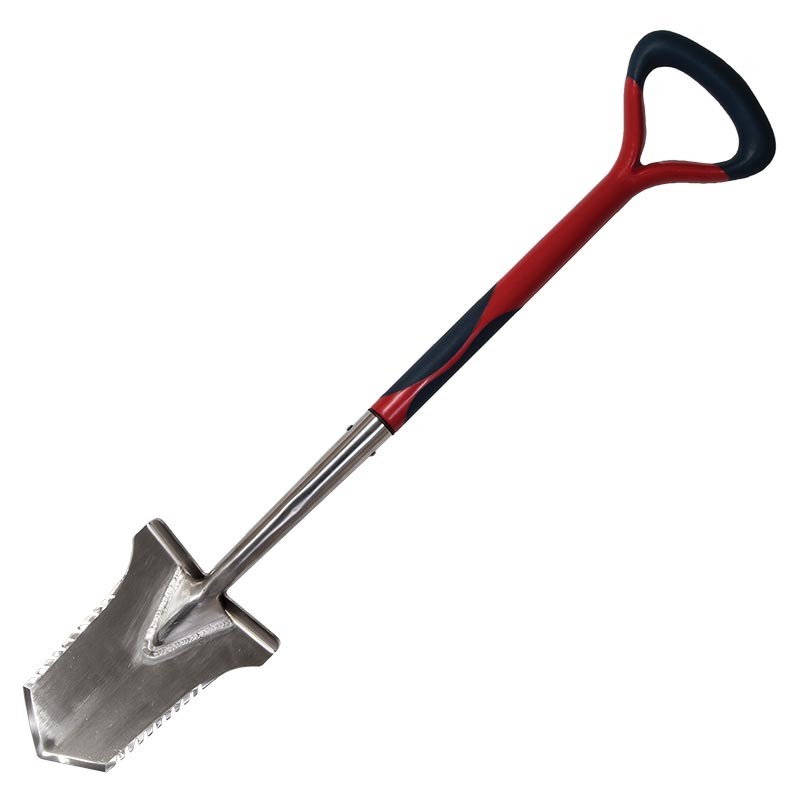
The Evolution Pro Cut
The ultimate accessary for the serious metal detectorist. Super strong, stainless steel specially designed spade.



